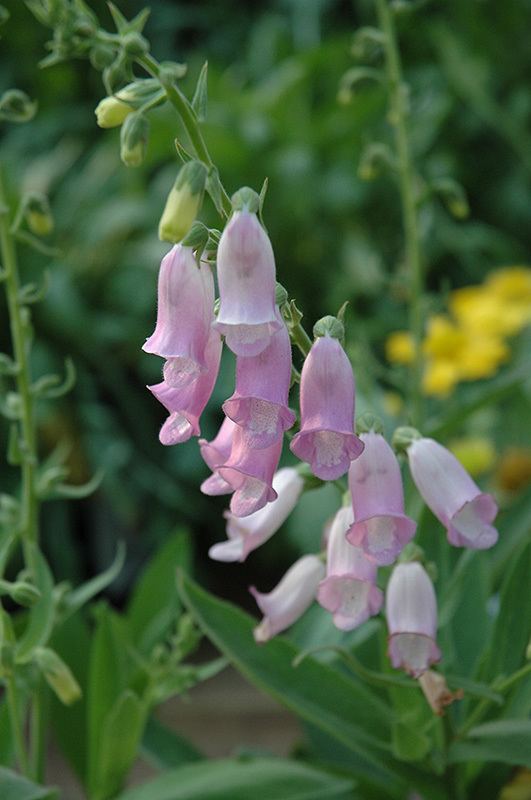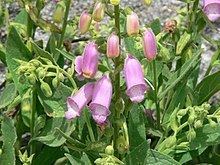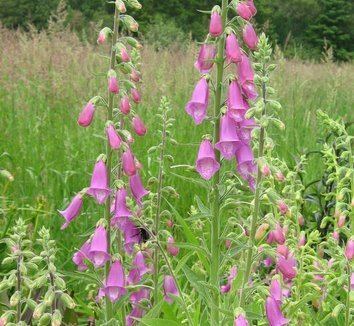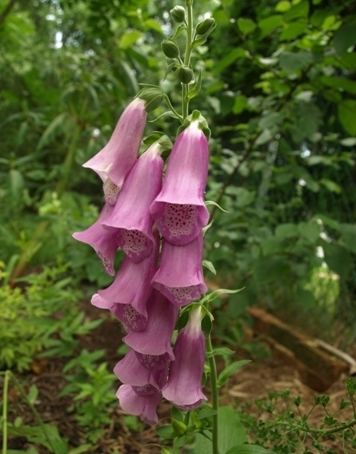Rank Species | Higher classification Foxgloves | |
 | ||
Similar Foxgloves, Digitalis parviflora, Digitalis obscura, Digitalis laevigata, Digitalis viridiflora | ||
Digitalis thapsi, known commonly as Spanish foxglove, Spanish digitalis, and fingerhut foxglove, is a flowering plant in the genus Digitalis that is native to Spain. It was first described by Carl Linnaeus in 1753. It is of commercial importance as an ornamental plant. Hybrids with D. purpurea have proved successful and are fertile.
Contents

Description

Its yellow-green leaves are ovate to oblong in shape and decurrent, with winged bases. The flowers, stems and leaves are covered with tiny hairs, giving them a soft appearance. The leaves have non-glandular trichomes and a striated cuticle. The pink flowers are arranged in raceme inflorescences.
Chemical properties

In studies, the restriction of calcium ions resulted in cardenolide accumulation in D. thapsi. Calcium quantity affects the redox chemical reactions in the cells. Without calcium, changes in antioxidant function were observed and catalase activity was slow. In another study, lack of calcium retarded growth and promoted digoxin formation. Manganese, in the form of manganese sulfate (MnCl), and lithium, in the form of lithium chloride (LiCl), also increased the digoxin concentration, but did not affect growth.

Calcium oxalate crystals and pericyclic fibers have been isolated from D. thapsi. These are 1.25 to 3 times more powerful in medicinal view than those found in D. purpurea. According to Dutch botanist Herman Boerhaave, Digitalis species are highly poisonous if directly ingested. All parts are poisonous.
Propagation

Besides normal cultivation, D. thapsi has been propagated using explant culture, a technique employed for the isolation of cells from piece(s) of tissue for harvesting. Auxins NAA, 2,4-D and IAA alone or combined with BA produced a callus. NAA caused root formation and BA shoot formation. NAA and BA combined induced organ generation much effectively. Plantlets obtained this way had a survival rate of 70%.

Joseph Gottlieb Kölreuter, a German botanist, observed that D. thapsi had many characteristics of D. purpurea after four to five generations of cultivation, and that the former became indistinguishable from the latter, a report that was considered "probably" trustworthy by Charles Darwin. D. thapsi and D. purpurea hybrids are generally fertile.
Habitat and growth
D. thapsi is widespread in Spain. A biennial evergreen plant, it flowers in late spring. A study of the fruiting activity in D. thapsi showed that production, size and number of seeds were interrelated. Analysis has shown that seed weight is not related to the length of the cotyledon, and that the length of the fifth leaf can serve as a useful factor in determining the genetic variability among specimens.
Cultivation

The species is used as an ornamental plant. It grows well in half-shaded to sun-exposed areas. Moderate watering is required, and the plant has an average drought tolerance. The soil should have a pH of 5 or up to 8. It can grow in chalk, clay, loam, sand, peat, or combinations.
